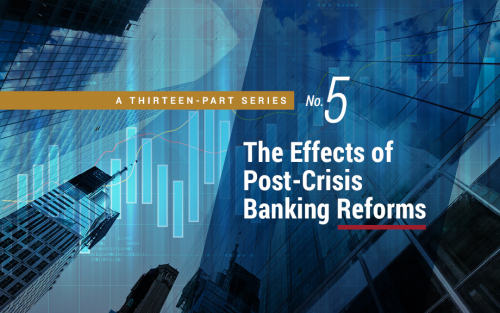A Retrospective on the Life Insurance Sector after the Failure of Silicon Valley Bank

Following the Silicon Valley Bank collapse, the stock prices of U.S banks fell amid concerns about the exposure of the banking sector to interest rate risk. Thus, between March 8 and March 15, 2023, the S&P 500 Bank index dropped 12.8 percent relative to S&P 500 returns (see right panel of the chart below). The stock prices of insurance companies tumbled as well, with the S&P 500 Insurance index losing 6.4 percent relative to S&P 500 returns over the same time interval (see the center panel below). Yet, insurance companies’ direct exposure to the three failed banks (Silicon Valley Bank, Silvergate, and Signature Bank) through debt and equity was modest. In this post, we examine the possible factors behind the reaction of insurance investors to the failure of Silicon Valley Bank.
Changing Risk‑Return Profiles

Are stock returns predictable? This question is a perennially popular subject of debate. In this post, we highlight some results from our recent working paper, where we investigate the matter. Rather than focusing on a single object like the forecasted mean or median, we look at the entire distribution of stock returns and find that the realized volatility of stock returns, especially financial sector stock returns, has strong predictive content for the future distribution of stock returns. This is a robust feature of the data since all of our results are obtained with real-time analyses using stock return data since the 1920s. Motivated by this result, we then evaluate whether the banking system appears healthier today, and if recent regulatory reforms have helped.
Are Stocks Cheap? A Review of the Evidence
We surveyed banks, we combed the academic literature, we asked economists at central banks.










 RSS Feed
RSS Feed Follow Liberty Street Economics
Follow Liberty Street Economics